| Previous :: Next Topic |
| Author |
Message |
MtnGoat
Member


Joined: 17 Dec 2001
Posts: 11992 | TRs | Pics
Location: Lyle, WA |
 |
MtnGoat
Member
|
 Tue Feb 24, 2009 6:00 pm |
|
|
It's due to a combination of things.
One factor is the size of the pixels on the sensor compared to the size of the star image at the focal plane of the lens. Ideally of course a star is a point source, but when focused by a lens it has a finite size which generally covers more than one pixel.
You can find sensors with very tiny pixels, but then you lose sensitivity because your little tiny light bucket catching photons is smaller, and you inevitably lose a few at pixel boundaries too. So what many folks do is 'bin' their sensors with tiny pixels, meaning they sum them during readout into 4x4 blocks. Of course then you're back to a larger effective pixel, but at the expense of resolution.
And of course at the native size with tinier pixels, the apparent disks are even larger because they're composed of more pixels. Argument rage endlessly about what pixel size is best, large ones are more sensitive but less resolution, though the stars appear smaller in pixel size. (These discussions are like the unleashed dog or gun threads of the astrohead forum world, along with which eyepieces are 'best', refractors vs reflectors, etc.)
Secondly, as the star twinkles due to air movement and as tiny irregularities in tracking motion occur, it spreads the star image around to adjacent pixels. The more gain you apply in post processing, the more the stars 'spread' as an adjacent pixel which only got a single taste of the star for an instant, now becomes brighter.
The third is the effect of the native image size, which is actually only 510x480, being resized when it's viewed. This of course turns a star a couple pixels across into even more pixels on the monitor.
Brighter stars tend to spill into more pixels, thus you see in the images that the fainter ones tend to be nice and small and the bright ones are larger.
You can get minimize this to a degree but you are still limited by the math and statistical functions of discretizing what is an essentially an analog process, but it takes very careful matching of scope focal length and sensor size, and even then it's nearly impossible to get away from. Note that on film in old school mode, the same thing happened too. Adjacent emulsion grains change due to light spread around the focal plane a tiny bit, and your stars get bigger looking the brighter they are.
Shots taken with huge sensors such as a DSLR tend to present smaller looking stars until you blow them up to about the scale you're seeing here, then they wind up looking similar. There are all kinds of books on matching pixel sampling to focal length and image scale and all kinds of detail depending on how far you want to go and what you consider acceptable.
With me taking a garden variety entry level imager and slapping it on whatever scope I can aim in the general direction of up, i'm not even close to that level of perfection.
Diplomacy is the art of saying 'Nice doggie' until you can find a rock. - Will Rogers
Diplomacy is the art of saying 'Nice doggie' until you can find a rock. - Will Rogers
|
| Back to top |
  
|
 |
Backpacker Joe
Blind Hiker


Joined: 16 Dec 2001
Posts: 23956 | TRs | Pics
Location: Cle Elum |
Thanks for the info. MtnHubble. I might try some of that when I get my 400 F5.6 L lens. Should be some fun.
"If destruction be our lot we must ourselves be its author and finisher. As a nation of freemen we must live through all time or die by suicide."
— Abraham Lincoln
"If destruction be our lot we must ourselves be its author and finisher. As a nation of freemen we must live through all time or die by suicide."
— Abraham Lincoln
|
| Back to top |
  
|
 |
MtnGoat
Member


Joined: 17 Dec 2001
Posts: 11992 | TRs | Pics
Location: Lyle, WA |
 |
MtnGoat
Member
|
 Wed Feb 25, 2009 6:17 pm |
|
|
Here are examples of what you can accomplish with a basic DSLR, a wide angle lens..and a plain old fixed tripod. the nice thing about short focal lengths is that it takes a while for the stars to trail, so you can get some longish exposures, then you just mooch around for SW that will allow you to stack frames together.
Basic Astrophotography from a fixed tripod
Diplomacy is the art of saying 'Nice doggie' until you can find a rock. - Will Rogers
Diplomacy is the art of saying 'Nice doggie' until you can find a rock. - Will Rogers
|
| Back to top |
  
|
 |
MtnGoat
Member


Joined: 17 Dec 2001
Posts: 11992 | TRs | Pics
Location: Lyle, WA |
 |
MtnGoat
Member
|
 Fri Feb 27, 2009 2:48 am |
|
|
Took this one while wating for Comet Lulin to clear the trees. M64, the Blackeye Galazy. 17 million light years distant. 30 minutes of 15 second subframes.
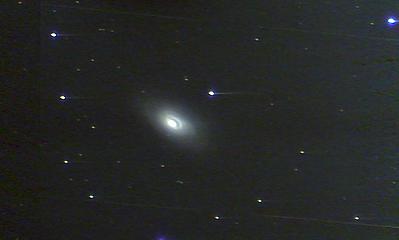 M64 the "Black Eye" Galaxy, 30 minutes of 15 second subframes
Orion Short tube 90mm
Diplomacy is the art of saying 'Nice doggie' until you can find a rock. - Will Rogers
Diplomacy is the art of saying 'Nice doggie' until you can find a rock. - Will Rogers
|
| Back to top |
  
|
 |
MtnGoat
Member


Joined: 17 Dec 2001
Posts: 11992 | TRs | Pics
Location: Lyle, WA |
 |
MtnGoat
Member
|
 Sat Feb 28, 2009 2:26 pm |
|
|
Two of the three galaxies in the "Leo Triplet". M65 and M66, at roughly 30-35 million light years. The third member is slightly too far away to capture in the same shot with this setup. M65 and M66, two spiral galaxies at about 35 million light years 25 minutes with the ST90mm/EQ2/DSI-C
15 second subframes
Diplomacy is the art of saying 'Nice doggie' until you can find a rock. - Will Rogers
Diplomacy is the art of saying 'Nice doggie' until you can find a rock. - Will Rogers
|
| Back to top |
  
|
 |
MtnGoat
Member


Joined: 17 Dec 2001
Posts: 11992 | TRs | Pics
Location: Lyle, WA |
 |
MtnGoat
Member
|
 Tue Mar 03, 2009 1:27 am |
|
|
Here's some other stuff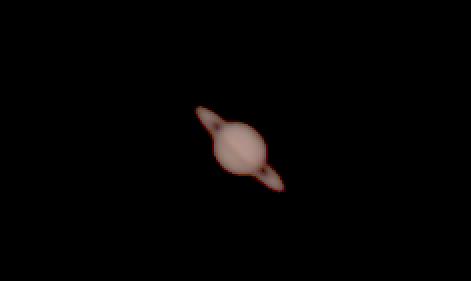 Not bad for a first try, Zhumell 12" F5 Newtonian Reflector 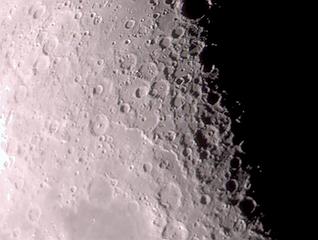 The Moon..duh. Zhumell 12"F5 Newtonian Reflector 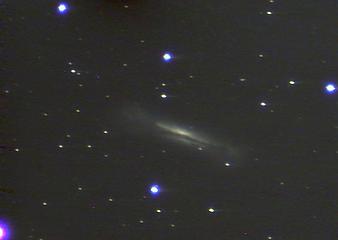 NCG 3628 is 35,000,000 light years distant.The galaxy is seen edge on and the effects of tidal interactions with two galaxies which lie slightly out of frame are evident in the tweaked dust lanes at the edges. ST90, 32 minutes
Diplomacy is the art of saying 'Nice doggie' until you can find a rock. - Will Rogers
Diplomacy is the art of saying 'Nice doggie' until you can find a rock. - Will Rogers
|
| Back to top |
  
|
 |
MtnGoat
Member


Joined: 17 Dec 2001
Posts: 11992 | TRs | Pics
Location: Lyle, WA |
 |
MtnGoat
Member
|
 Sun Mar 08, 2009 11:19 pm |
|
|
Got this in on Friday night while battling a high, thin moonlit haze.
The yellow to red tone of the cluster is not a processing effect, it consists of mostly relatively ancient stars which are nearly all in that color range at this point in their evolution.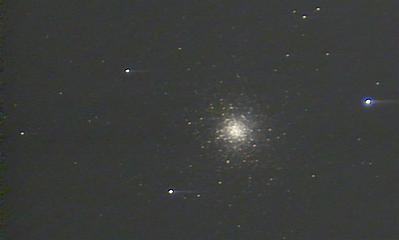 M3 in Canes Venatici. This globular cluster is 34,000 light years away and is estimated to contain 500,000 stars. ST90, F5.6, 80 frames @ 4 secs, Meade 4504 mount, Meade DSI - C
Diplomacy is the art of saying 'Nice doggie' until you can find a rock. - Will Rogers
Diplomacy is the art of saying 'Nice doggie' until you can find a rock. - Will Rogers
|
| Back to top |
  
|
 |
MtnGoat
Member


Joined: 17 Dec 2001
Posts: 11992 | TRs | Pics
Location: Lyle, WA |
 |
MtnGoat
Member
|
 Mon Mar 09, 2009 11:55 pm |
|
|
It's snowing, a full moon, and I'm stuck on motorizing my new mount for lack of hardware, once more. So I mined some older images and reprocessed them using some tricks I've learned but never applied to images done prior to the trick learnage. Also there is a recent one of the Sombrero galaxy..
So here they are, reaching back to August...particularly pleased with how M13 turned out
 The famous Sombrero galaxy (M104). I bumped the mount at some point during the run and the bright stars show this screwup. I'll be back for more, this thing is cool looking. 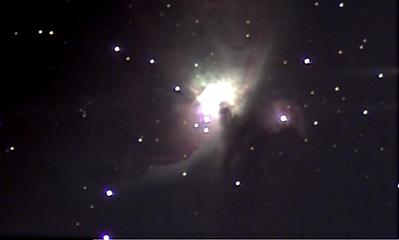 Good old standby Great Nebula in Orion with the ETX70. 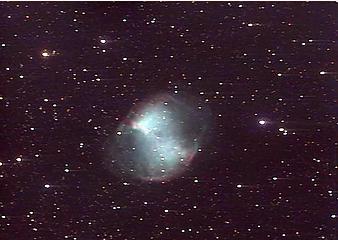 The famous Dumbell Nebula, M27 in Vulpecula. This is the gas shell ejected by a dying star, carrying heavy elements which will enrich the galactic medium and create new planets and stellar systems.  The Great Cluster in Hercules with the Schmidt Newt 8". Short subframes help keep star images tight. This huge cluster is the 2nd brightest in the sky, the brightest in the northern hemisphere, and is visible to the naked eye on a good night
Diplomacy is the art of saying 'Nice doggie' until you can find a rock. - Will Rogers
Diplomacy is the art of saying 'Nice doggie' until you can find a rock. - Will Rogers
|
| Back to top |
  
|
 |
MtnGoat
Member


Joined: 17 Dec 2001
Posts: 11992 | TRs | Pics
Location: Lyle, WA |
 |
MtnGoat
Member
|
 Tue Apr 07, 2009 12:06 am |
|
|
In spite of the waxing moon high in the sky lighting up a thin layer of haze, I got some postable stuff last sat night.
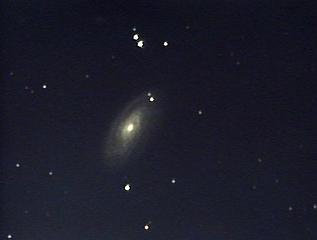 Another interesting one worth a clear night to reshoot. 47 million lights 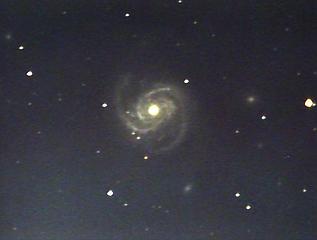 not bad for a first go. should be much better minus the moon and haze. M100, 52 million lights shot on a bright moon, hazy night  good old M13. probably the second best shot i've ever done of this.
Diplomacy is the art of saying 'Nice doggie' until you can find a rock. - Will Rogers
Diplomacy is the art of saying 'Nice doggie' until you can find a rock. - Will Rogers
|
| Back to top |
  
|
 |
MtnGoat
Member


Joined: 17 Dec 2001
Posts: 11992 | TRs | Pics
Location: Lyle, WA |
 |
MtnGoat
Member
|
 Sat Apr 11, 2009 3:05 pm |
|
|
Got some decent shots last night, 1 in the hour before the moon came up, a few after. However, this is the one that is the coolest.
Just a smudge. A speck. Really tough to target and make sure I had the right spot.
This smudge is probably one of the most distant things I will ever image...because it is so far away it is getting darn close to the age of the entire universe.
The photons I caught from this image.... are 12 billion years old. Yup, this object is 12 billion light years distant, getting dang close to the estimated age of the universe.
APM 08279 is a distant quasar visible only because there is an unseen galaxy between here and there whose gravity bends the light and makes a 'lens' effect...thus magnifying and brightening the far more distant object behind it, shown in the image.
the light from this object has been on it's way here for twice as long as our entire solar system has existed.
The field here is packed with small, distant galaxies. Nearly every smudge that is not clearly a star, is actually a galaxy.
 APM 08279 is a gravity lens quasar and is about 12 billion light years distant.
Diplomacy is the art of saying 'Nice doggie' until you can find a rock. - Will Rogers
Diplomacy is the art of saying 'Nice doggie' until you can find a rock. - Will Rogers
|
| Back to top |
  
|
 |
RayD
the griz ate my pass


Joined: 20 Aug 2005
Posts: 1763 | TRs | Pics
Location: Vacaville |
 |
RayD
the griz ate my pass
|
 Sat Apr 11, 2009 4:38 pm |
|
|
Good stuff, Goat!
It always blows me away when I read the distances to some of these light sources....the light that takes millions of years to travel here is still visible! Wow!
Some energy, eh?
I try to wrap my mind around what kind of train whistle could be heard across a continent. 
don't believe everything you think
don't believe everything you think
|
| Back to top |
  
|
 |
MtnGoat
Member


Joined: 17 Dec 2001
Posts: 11992 | TRs | Pics
Location: Lyle, WA |
 |
MtnGoat
Member
|
 Sun Apr 12, 2009 2:32 pm |
|
|
Another one from Sat nite. In spite of the full moon and haze, it looks pretty good. This is one I'll definitely return to for at least an hour with moonless skies.
The blue blobs in the spiral arms are nebulas containing star formation regions.
 M101 lies about 27 million light years away. It was discovered in 1781 and is considered one of the prototypical "Grand Design" spiral galaxies.
Diplomacy is the art of saying 'Nice doggie' until you can find a rock. - Will Rogers
Diplomacy is the art of saying 'Nice doggie' until you can find a rock. - Will Rogers
|
| Back to top |
  
|
 |
MtnGoat
Member


Joined: 17 Dec 2001
Posts: 11992 | TRs | Pics
Location: Lyle, WA |
 |
MtnGoat
Member
|
 Wed Apr 29, 2009 10:29 am |
|
|
Last weeks moonless nights and clear skies were a bonanza for me, I was up way too late 5 nights in a row. Luckily, some of them were even on non work nights. Spring is galaxy season and I've been a busy boy. Here's a lastest redo of M51 and one of a field with several large spirals in it. I'll post up the rest of the catch later.
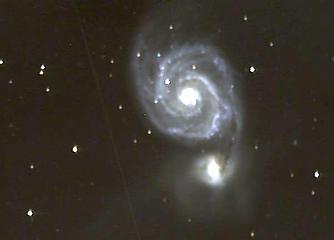 The Whirlpool Galaxy and companion in a 38 minute exposure. The diffuse gas cloud surrounding the companion galaxy is clearly visible. 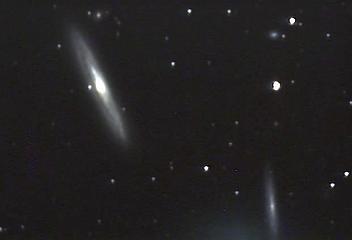 NGC4216 and Friends. NGC4216 is about 40 million light years away. At lower right is NGC4206 at about 50 million, and the smuge at upper right is IC771 at 240 million.
Diplomacy is the art of saying 'Nice doggie' until you can find a rock. - Will Rogers
Diplomacy is the art of saying 'Nice doggie' until you can find a rock. - Will Rogers
|
| Back to top |
  
|
 |
MtnGoat
Member


Joined: 17 Dec 2001
Posts: 11992 | TRs | Pics
Location: Lyle, WA |
 |
MtnGoat
Member
|
 Mon Jun 15, 2009 8:57 am |
|
|
Last night the moon was finally rising late enough to not blow out all the faint fuzzies, and Sunday's all day windfest got rid of the hot day haze that had been building. As a result, last night was clearer and darker than it's been for at least three weeks.
Here's the result...a galactic sampler, three galaxies in decent detail amidst a lot of other more distant fuzzies which can be seen if you look closely. Two spirals, one face on, one edge on, and an elliptical system between them. This small association is a wonderfully compact arrangement which isn't very well known. Makes for very cool pictures!
When I set up, my intent was to shoot 5985 only, the one at left. I had no idea it had friends. After I set up and aligned, and then slewed to target, I had some error and all I saw was the edge on one. Since it was distinctive, I pulled up Google Sky to see where I was looking and was thrilled to find I was near the right spot, and framing properly would bag me three for the price of one.
This is what I like about this game, there is always a surprising new treat even when you think you have it all down.
These galaxies are about 100 million light years distant. The image consists of a composite of 70 frames at 60 sec each. Taken with the Meade 8" F4 schmidt newtonian.
Diplomacy is the art of saying 'Nice doggie' until you can find a rock. - Will Rogers
Diplomacy is the art of saying 'Nice doggie' until you can find a rock. - Will Rogers
|
| Back to top |
  
|
 |
MtnGoat
Member


Joined: 17 Dec 2001
Posts: 11992 | TRs | Pics
Location: Lyle, WA |
 |
MtnGoat
Member
|
 Wed Aug 19, 2009 11:05 am |
|
|
Been getting some decent stuff in the last month or so, here's a sampler.
I also made a moving .GIF of Pluto's motion over 48 hours, but Flickr doesn't store this format correctly, so no Pluto for you!
Also added a couple variable stars to my program every night, both are explosive variables with a large brightness range and I intend to attempt a movie of them changing brightness over time. I figured two was a reasonable number to work, now that I am used to finding them it only adds about 15 minutes to my work each night, not so bad. When I started, both were near peak brightness and it's been interesting to see what is going on with them night by night. One has begun fading and continued, the other faded a bit, and now seems to be getting brighter again.
anyhow... Very bright and huge globular cluster M22 in Sagittarius 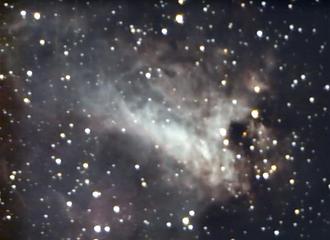 The Omega Nebula, M17 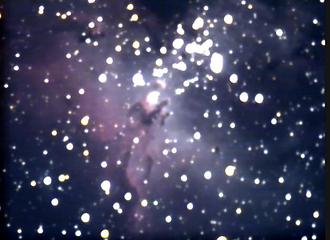 M16, Eagle Nebula, showing the "Pillars of Creation" dust features at center 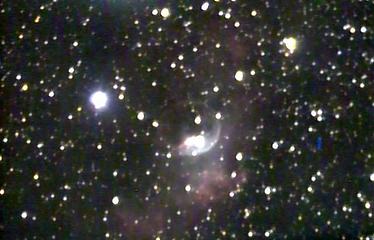 The Bubble Nebula in Cassiopeia  The Cocoon Nebula, Cygnus  M24 in Sagittarius contains many, many stars and a dark nebula, seen at top center 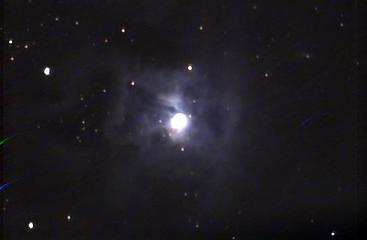 A hot bright new star illuminates the nebula that gave birth to it
Diplomacy is the art of saying 'Nice doggie' until you can find a rock. - Will Rogers
Diplomacy is the art of saying 'Nice doggie' until you can find a rock. - Will Rogers
|
| Back to top |
  
|
 |
|
|
You cannot post new topics in this forum
You cannot reply to topics in this forum
You cannot edit your posts in this forum
You cannot delete your posts in this forum
You cannot vote in polls in this forum
|
Disclosure: As an Amazon Associate NWHikers.net earns from qualifying purchases when you use our link(s). |